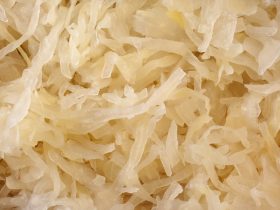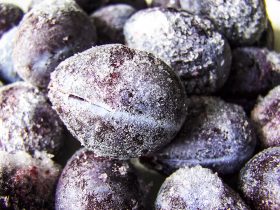Artichoke is a specific form of thistle plant harvested at a certain time in their development process in order to keep it in as edible a state as possible. With a bitter taste while raw and a subtle and earthy flavor once fully cooked, artichokes are often eaten heavily seasoned or as a topping in certain kinds of dishes.
Much like other green vegetables, the large majority of artichoke’s mass is primarily water, and as such it is quite susceptible to both environmental quality degradation as well as bacterial or fungal infestation when stored in the improper conditions.
Artichokes may be frozen in the event that their normal shelf-life is insufficient for your particular uses. However, choosing to freeze artichokes is a somewhat lengthy process that requires more steps and time than simply throwing this green flowering body into the freezer. Artichoke will also degrade somewhat in terms of texture and taste owing to the cellularly damaging effects of freezing temperatures.
What Do You Need to Freeze Artichoke?
As choosing to freeze artichokes is a somewhat lengthy process requiring multiple pieces of kitchen equipment, it is only fitting that the artichoke lasts a sufficiently long time in comparison to the energy and time put in.

When properly frozen, artichokes will last up to twelve months before spoiling or otherwise degrading in quality significantly.
In order to freeze your artichokes, you will require kitchen shears or a sufficiently sharp-enough knife, a spoon, a gentle food-safe acidic liquid such as vinegar or lemon juice, a sufficiently large pot, a stove, a bowl of ice water, a freezer bag and a freezer capable of reaching temperatures at or below 32°F.
How to Freeze Artichoke
The first step to freezing your artichokes, much like the other forms of preservation in this article, is to thoroughly wash the vegetable in order to remove any insects or debris.
Once washed, take your kitchen shears or knife and remove the stem at the base of the artichoke’s bulb. Using the same knife or kitchen shears, remove approximately one inch from the top of the artichoke, or enough of it so that you may use your spoon to remove the edible portion of the artichoke from its “heart”.
Once you have liberated the flower or edible portion of the artichoke from the bulb, submerge or drizzle it in a small amount of your acidic liquid. The exact kind of edible acidic liquid is largely up to your own preference, and no particular acid is recommended, so long as it possesses a non-neutral or non-basic pH.
As you are doing this, bring a pot of water to boil on the stove. Add a dash of the same acidic liquid you used in the previous step to the boiling water prior to submerging the artichoke, which will ensure that both the artichoke’s texture and color is preserved as best as possible.
Leave the artichoke flowers submerged beneath the water for approximately fifteen minutes, or just enough time to not completely cook the vegetable. As the artichoke is being boiled, prepare a bowl of ice water large enough to completely cover all the parts of the artichoke you are currently boiling.
Once fifteen minutes have passed, remove the artichokes from the pot and immediately plunge them beneath the ice water so as to completely halt the cooking process.
Now completely cooled, dry the artichoke pieces once more with a cloth towel before placing them in your freezer bags, separating the individual batches by your desired serving size.
Keep in mind that once the artichoke has been thawed from the freezer, returning it to the freezing temperatures will badly damage its quality at a cellular level, discoloring the artichoke and turning its texture into that of sludge.
Store the bagged and blanched artichoke in the freezer for up to twelve months, far from any sources of moving air such as freezer vents or fans, which will cause freezer burn to occur.
Does Freezing Affect Artichoke’s Quality?
Like all vegetables and fruits with high water content, artichokes will degrade in quality somewhat when placed in freezing temperatures. This is because of the fact that water molecules form hexagonal chains at these temperatures, causing the water to expand and crystallize, rapidly imploding the plant cells of your artichoke.
This is largely unavoidable, though certain steps may be taken in order to reduce the impact of this effect, such as the blanching process utilized in the previous section.
Signs that your artichoke has begun to degrade in quality owing to the effects of freezing is a marked brown coloring of the flower, a softening or gelatinizing in texture and slime or other watery substances draining from the artichoke as a whole.
How Long Does Cut Artichoke Last at Room Temperature?
As the vast majority of organic produce is highly susceptible to colonization by microbiological life, many home chefs or grocery stores attempt to stall their eventual propagation through the use of low temperatures and carefully controlled humidity environments.
However, there are certain cases wherein this is not possible or otherwise not done, and as such the organic produce is left exposed to both the elements and microbes. This, often, results in rapid deterioration and spoilage of their produce.
In the case of artichokes that have already been peeled and cut, the window of time is even shorter than that of other green vegetables. Left out on your counter or table, the cut artichoke pieces will only last up to ninety minutes before the safety of eating them must be called into question.
As always, do not attempt to taste the cut artichoke in order to determine whether it is still safe to eat. At this early a stage, it is likely that the various toxic compounds produced by bacterial cultures are not abundant enough to be discernible by the human tongue, even if it may still make you sick.
This is due to the speed of which bacteria and fungi are capable of reproducing at temperatures between 40°F and 140°F, otherwise known as the “danger zone” by certain food-storage authorities.
How Long Does Whole Artichoke Last at Room Temperature?
Considering the fact that, much like the rest of living creatures, bacteria and fungi are subject to the laws of physics and as such cannot easily penetrate through solid surfaces, the relative shelf-life of whole artichokes at room temperature is somewhat longer than that of artichokes that have already been peeled and cut.
Unlike that of cut artichokes, whole artichoke generally does not have their inner flesh or “heart” exposed to the elements or to fungal spores and airborne bacteria, and as such last a significantly longer time. In the grand scheme of things, intact artichoke’s one to four day shelf-life on the counter is still quite short, however.
In order to best preserve your intact artichokes in these conditions, first lightly rinse it to ensure that no insects or dirt are present on the surface. Carefully dry the flowering vegetable with a cloth towel, ensuring that the flesh does not rupture or bruise, because this will compromise the artichoke’s shelf-life.
After washing and drying, place the artichoke in a dry and cool area of your pantry or cupboard, far from any sources of moisture or direct sunlight, such as faucets or open windows.
Can You Refrigerate Artichoke?
Yes, artichokes can be preserved just fine in the crisper drawer of your refrigerator, though steps must be taken in order to ensure that the artichoke does not either dry out or begin to develop fungal colonies prematurely.
In order to do this, first wash the artichokes thoroughly, removing any signs of fungal growth such as furry outcroppings or off color spots. Once washed, drain the artichoke until its surface is just barely damp.
Now only slightly wet, place the artichoke in a plastic bag sufficiently large enough to contain the vegetable without squeezing it too tightly.
Using a fork, perforate small holes throughout the bag. This will both prevent excessive condensation as well as allow the artichoke to “breathe” so to speak, producing a more hostile environment for fungal spores to germinate in.
Store the perforated bag of artichoke in your crisper drawer for up to one week, though the artichoke may begin to degrade in quality at a sooner point in time than this period.
References
1. Ceccarelli N., Curadi M., Picciarelli P., Martelloni L., Sbrana C., Giovannetti M. “Globe artichoke as a functional food” Mediterranean Journal of Nutrition and Metabolism 2010
2. “Artichokes a la polita”. greek-recipe.com. Archived from the original on 15 December 2010. Retrieved 2011-01-17.





Hi, I'm Dom
Dom Eats was started to help other people fall in love with food. While cooking can feel intimidating, it doesn't have to be.